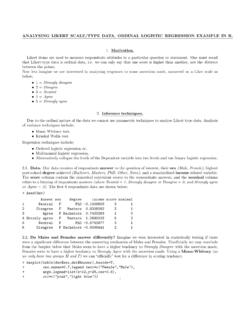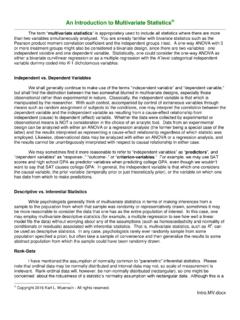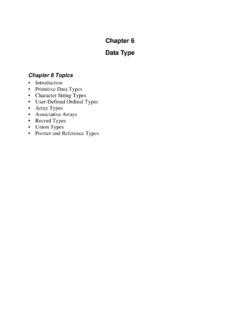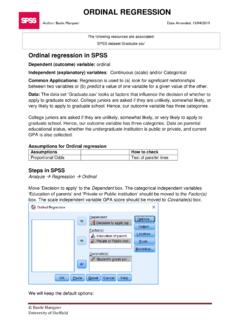Transcription of WHO R&D Blueprint novel Coronavirus
1 WHO R&D Blueprint novel Coronavirus COVID-19 Therapeutic Trial Synopsis World Health Organization 2020. All rights reserved. This is a draft. The content of this document is not final, and the text may be subject to revisions before publication. The document may not be reviewed, abstracted, quoted, reproduced, transmitted, distributed, translated or adapted, in part or in whole, in any form or by any means without the permission of the World Health Organization. The mention of specific companies or of certain manufacturers products does not imply that they are endorsed or recommended by WHO in preference to others of a similar nature that are not mentioned.
2 Errors and omissions excepted, the names of proprietary products are distinguished by initial capital letters. February 18, 2020, Geneva, Switzerland 2 COVID-19 Therapeutic Trial Synopsis Draft February 18, 2020 Table of Contents TABLE OF CONTENTS .. 2 1. 3 2. PILOT AND PIVOTAL STAGES .. 4 PILOT STAGE .. 4 PIVOTAL STAGE .. 5 3. ENDPOINTS .. 5 PRIMARY ENDPOINT .. 5 SECONDARY ENDPOINTS .. 7 4. STUDY 7 5. STUDY POPULATION AND SITES .. 7 6. STUDY AND PARTICIPANT DURATION .. 9 7. RANDOMIZATION .. 9 8. BLINDING .. 10 9. STATISTICAL CONSIDERATIONS .. 10 PRIMARY ANALYSES METHODS FOR PRIMARY AND SECONDARY ENDPOINTS .. 10 PRIMARY ANALYSIS POPULATION.
3 11 STATISTICAL POWER AND SAMPLE SIZE CALCULATIONS .. 11 STATISTICAL MONITORING BOUNDARIES .. 11 SECONDARY PRE-SPECIFIED SUBGROUP ANALYSES .. 11 METHODS TO ENHANCE QUALITY OF RETENTION .. 11 10. DATA MONITORING COMMITTEE, STEERING COMMITTEE AND INTERIM ANALYSES .. 11 3 COVID-19 Therapeutic Trial Synopsis Draft February 18, 2020 COVID-19 Therapeutic Trial Synopsis A randomized multi-center adaptive clinical trial to evaluate the efficacy and safety of investigational therapeutic agents in combination with standard-of-care for the treatment of hospitalized patients with novel Coronavirus disease (COVID-19). The trial will be carried out under a Master Protocol to continue across outbreak sites until the scientific questions of interest are addressed.
4 The trial will be conducted in two stages: the first will be a Pilot Stage and the second will be a Pivotal Stage. 1. Objectives Primary objective of the Pilot Stage --To engage multiple sites to achieve timely insights about important design and feasibility issues of recruitment rate and protocol adherence, integral to finalizing the design of the Pivotal Stage; and, to derive more precise estimates of patient characteristics, markers of evolution of illness and clinical outcomes in order to refine eligibility criteria, variables for randomization stratification, outcome measures and determine sample sizes for to investigate plausible effect sizes in the Pivotal Stage.
5 Primary objective of the Pivotal Stage --To evaluate the effect on the primary endpoint (to be specified), for each of several experimental regimens involving investigational therapeutic agents, through pairwise comparisons of each experimental regimen with a standard-of-care control arm, and under a sequential design. Secondary objectives of the Pivotal Stage: --To evaluate the safety and tolerability of each experimental regimen relative to the standard-of-care control arm. 4 COVID-19 Therapeutic Trial Synopsis Draft February 18, 2020 --To evaluate effects of each of the experimental regimens on secondary endpoints, including mortality. 2.
6 Pilot and Pivotal Stages Pilot Stage The trial will have a Pilot Stage engaging multiple study sites. In this stage, participants will be randomized between a standard-of-care control arm and several experimental regimens, each involving an investigational therapeutic agent(s) provided in addition to standard-of-care. While the exact sample size of the Pilot Stage will be determined after establishing the Pilot Stage population, interventions, comparators and outcomes, it is likely the Pilot Stage will have approximately 50-100 participants. These data will provide valuable insights regarding the design, conduct and analysis of the Pivotal Stage, including trial feasibility recruitment rate and protocol adherence and further refinement in the eligibility criteria, more precise estimates of enrolled patient characteristics, markers of evolution of illness and clinical outcomes, leading to a disease-, patient population- and intervention-responsive definition of the primary and secondary endpoints, and procedures to enhance quality of trial conduct.
7 When the sample of patients in the Pilot Stage has been enrolled, the enrollment into the Pivotal Stage will proceed immediately. Enlightened by analyses of the data from the Pilot Stage, the Steering Committee will make timely recommendations for finalizing the design of the Pivotal Stage. A decision will be made regarding whether the data from the Pilot Stage would be included in the primary analyses of the Pivotal Stage data. Importantly, to preserve the integrity of the Pivotal Stage, such inclusion of the Pilot Stage data would be appropriate only if those using the Pilot Stage data to enlighten decisions about finalizing the design of the Pivotal Stage do not have access to information from the Pilot Stage that would be directly or indirectly informative about the efficacy and safety of the experimental regimens being evaluated in the Pivotal Stage.
8 5 COVID-19 Therapeutic Trial Synopsis Draft February 18, 2020 Pivotal Stage The Pivotal Stage of the trial will be designed with intention to provide reliable evidence about the efficacy and safety of multiple experimental regimens, each involving one or more investigational therapeutic agents provided in addition to standard-of-care. The efficacy and safety of these experimental regimens will be assessed through pairwise comparisons with the standard-of-care control arm. 3. Endpoints Primary endpoint The primary endpoint should be responsive to the eligible patient population, intervention and course of illness of COVID-19. While all-cause mortality (ACM) is an important outcome, depending upon event rates observed in the Pilot Stage, the primary endpoint should be a composite measure of clinical improvement and/or survival, assessed at a pre-specified time (such as 28 days) post randomization.
9 A special WHO committee arrived at the ordinal scale (given in the table below and the Appendix) that measures illness severity over time. The primary outcome could be a measure of patients' clinical status at a particular time point after enrolment, depending upon frequency of outcome assessment ( , 14, 28, or 60 days). Agreement and consistency in recording of individual outcome events at particular time points will facilitate interpretation and combination of results across studies and trials. The definition of the endpoint should be fine-tuned for the Pivotal Phase, based on the Pilot Phase of the trial. 6 COVID-19 Therapeutic Trial Synopsis Draft February 18, 2020 ordinal Scale for Clinical Improvement 7 COVID-19 Therapeutic Trial Synopsis Draft February 18, 2020 Secondary endpoints Secondary endpoints likely will include a separate endpoint of ACM, unless it is determined that the trial could be adequately powered to reliably assess the effects on ACM as a primary endpoint.
10 Other secondary endpoints likely include effects on other measures for how participants feel, function and survive, such as clinical measures of disease severity, health-related quality of life, as well as biomarkers of illness, such as clearance of virus from body sites. Candidate measures include (at pre-specified time points or in time to event analyses): virological clearance of nasopharyngeal or respiratory samples, blood, urine or stool; admission to critical care unit; need for supplemental oxygen, mechanical ventilation/oxygenation or ECLS; need for intravenous vasoactive medications; need for renal replacement therapy; death in critical care unit, death in hospital and at vital status (death) at 28 days; hospital-free days, ICU-free; and biological and immunological markers of illness.

















